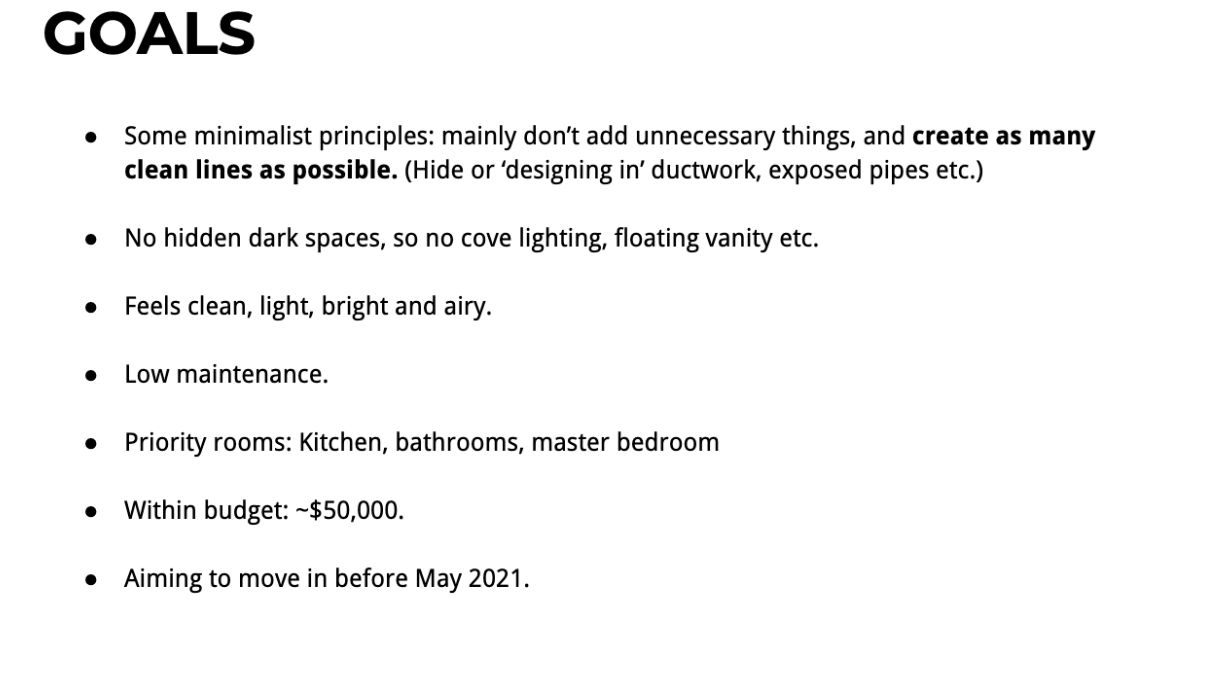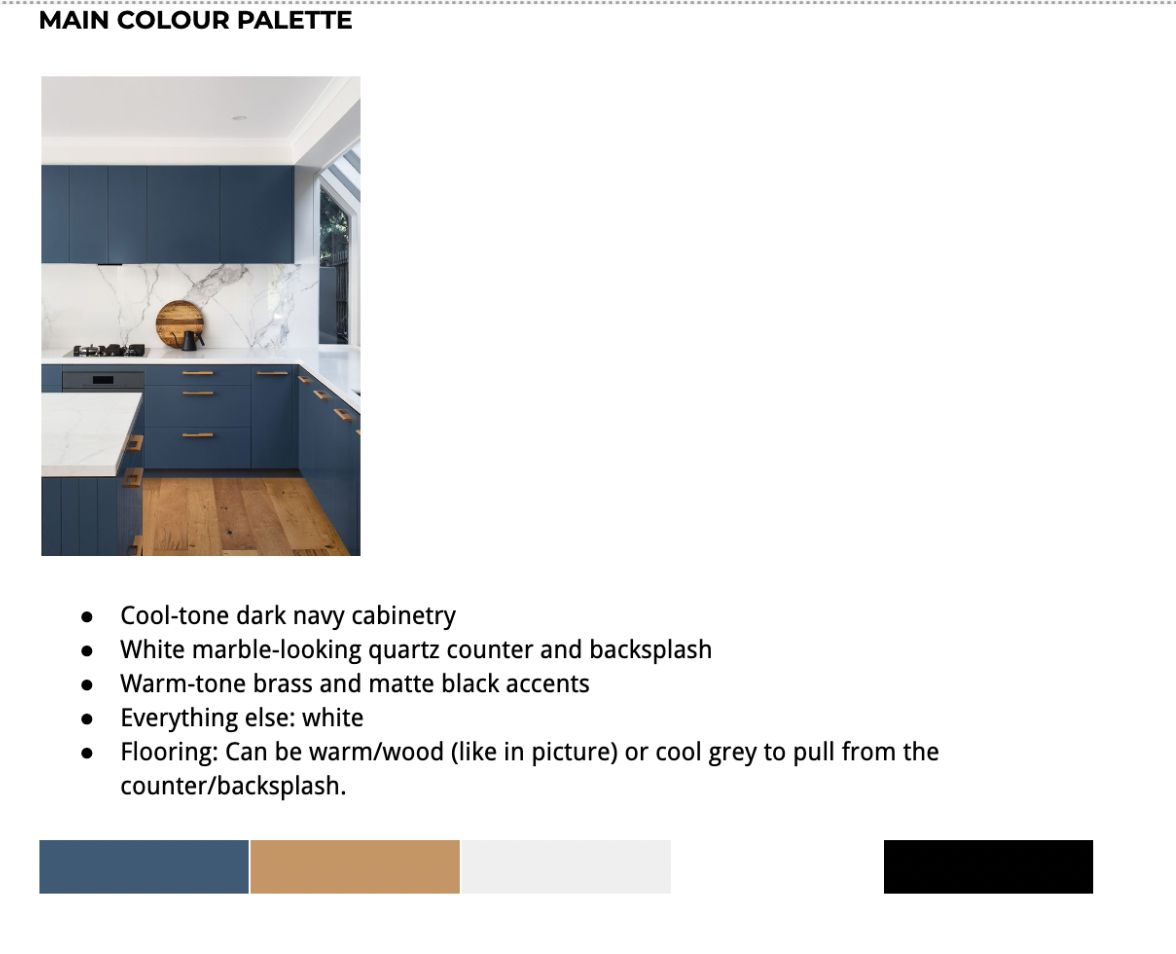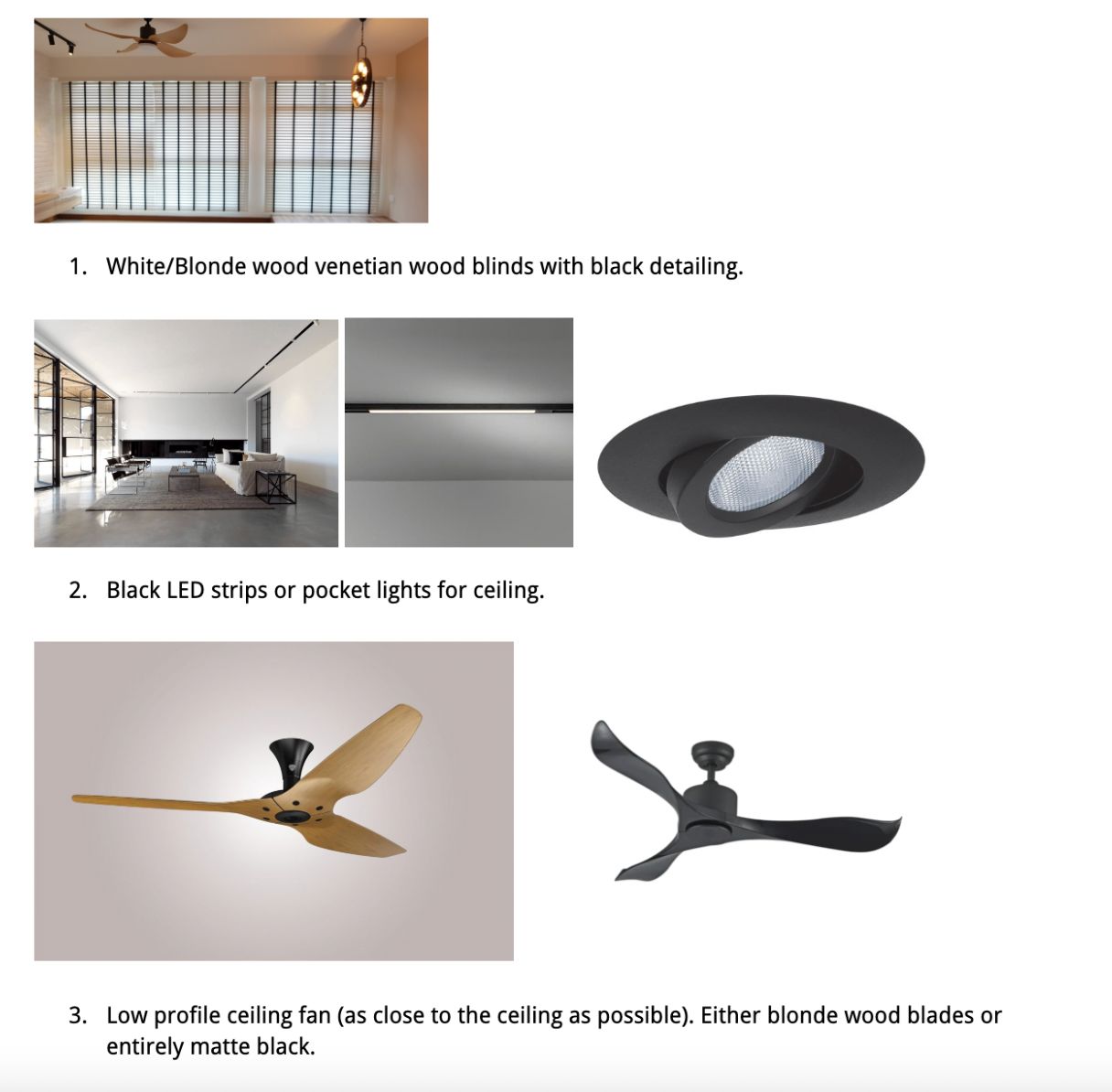An Introvert Renovates: How To Design An Introvert’s Home (Part 2)

Get The Property Insights Serious Buyers Read First: Join 50,000+ readers who rely on our weekly breakdowns of Singapore’s property market.
I think I’ve been preparing for this my whole life. For as long as I can remember, I’ve been interested in interior design.
As a school kid, I remember eagerly awaiting the arrival of the yearly IKEA catalogue in the mail. I played the life simulation computer game The Sims just so I could build and decorate houses for my characters to live in. My bedroom became a testbed for the latest interior design trends I could afford. Even now, my Netflix and YouTube staples are home makeovers and interior design shows.
I’ve also always been an introvert, meaning that I prefer environments that won’t overstimulate me. I like keeping my surroundings clean, tidy and organised, just so I’m immediately at ease.
When it finally came to designing the interiors of my own home, I was pretty certain of what I wanted. You can check out my 30-page interior design brief, but I won’t be instructing you on how to recreate my specific interior design style, or any for that matter.
Rather, in Parts 2 and 3 of my renovation journey, I’ll be sharing with you the broad strategies I used to create a soothing sanctuary for my introverted self. I believe these strategies can be applied to any home as long as your renovation goal is to create a space that calms and restores.
In Part 2, these three strategies are intended to guide your decisions on the ‘bones’ of the home, the fundamentals about structure, colour and lighting that will create spaces fit for an introvert.
1. Adopt a small, largely neutral colour palette
Bright colours are energetic. Bright colours demand your attention. They literally excite your nervous system, starting by searing your retinas, which consequently sets your brain abuzz. And that’s a no-no for introverts.
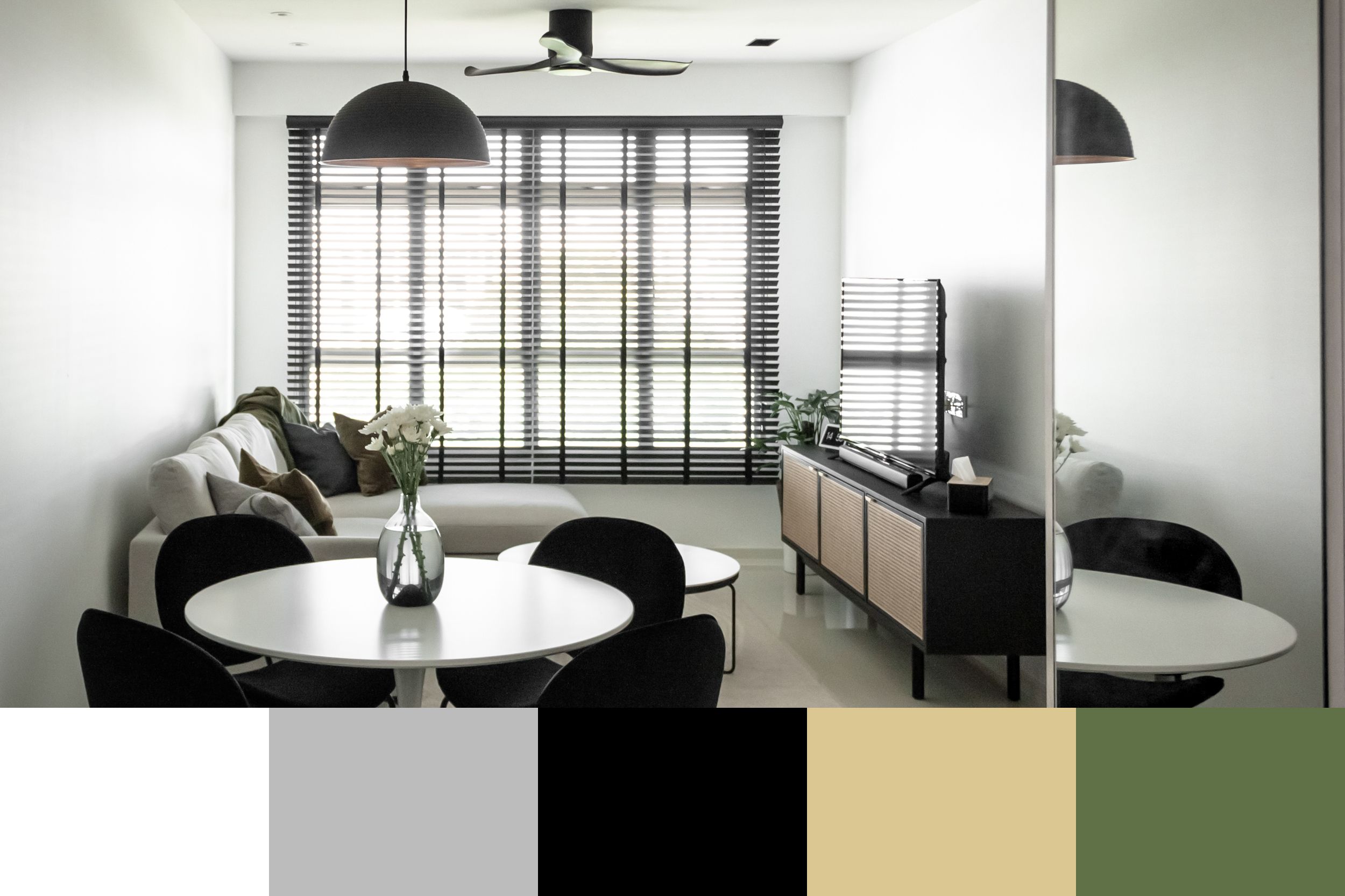
Earlier this year, I professed my love for neutral-coloured interiors on Stacked. And it’s not difficult to see why – there’s just something about a monochromatic room, or even a space awash in beiges that just makes my soul sigh in relief.
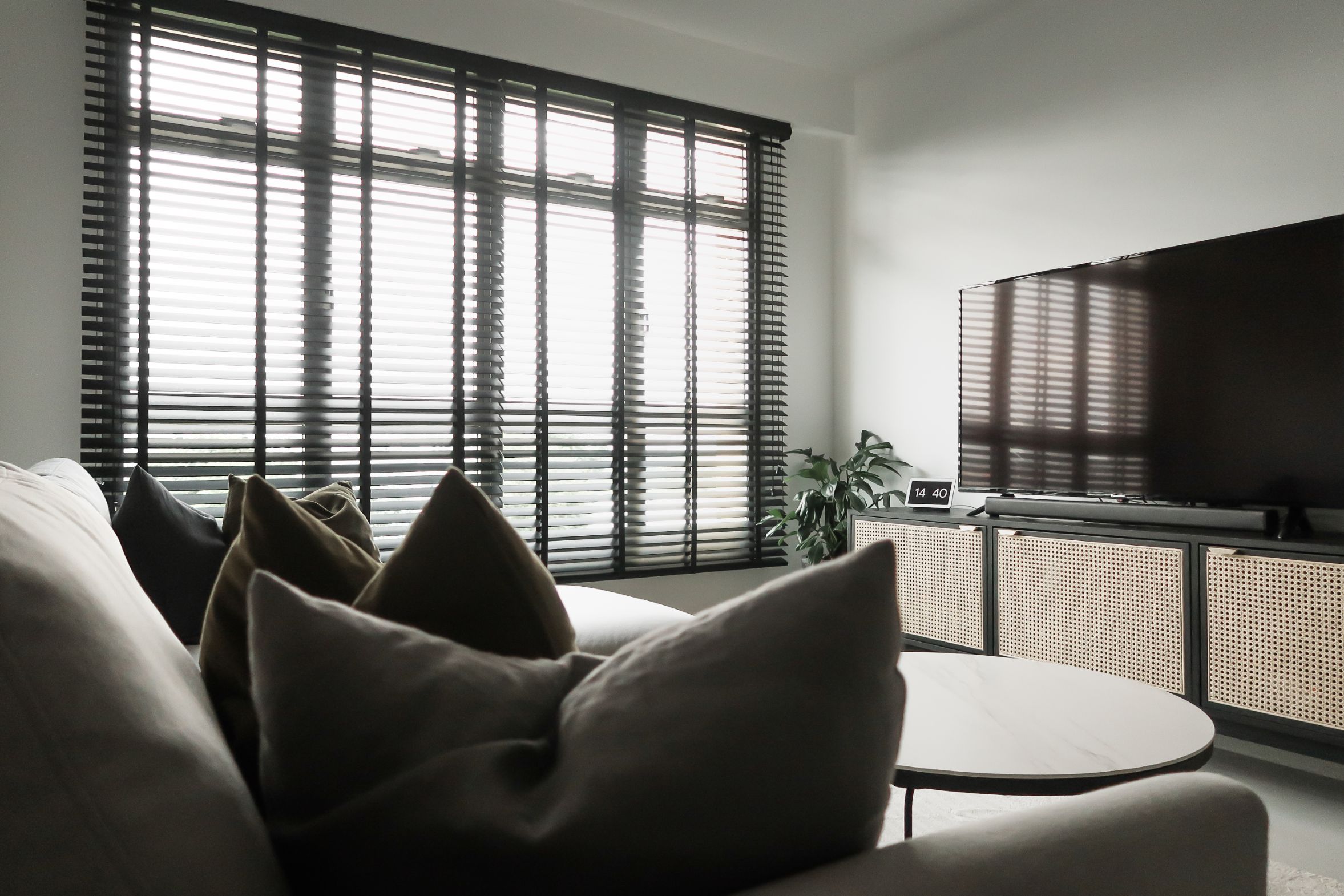
Property AdviceA Black & White Lover’s Guide To Choosing Colours For Your Home
by DanI’m not saying that you can’t have fun with colour. Have a bright colour, or even two. I myself chose green as an accent colour. Pastels are also a great way to introduce colour without alarming your senses.
The trick though, is to be very selective about what colours go into your home, and absolutely disciplined about maintaining that colour palette from ceiling to floor.
When there’s that sort of harmony and predictability in the colours of your home, your mind won’t be jumping every time you round a corner.
2. Reduce architectural lines
This is where I may lose some of you. The concept of architectural lines sounds cheem, and the fixes I propose may not seem entirely pragmatic. But this is the strategy that will take your home from mere space to sanctuary.
Have a look around at your walls and ceilings. What sort of features are there? Chances are there will be niches, pillars and beams that create extraneous corners and lines.
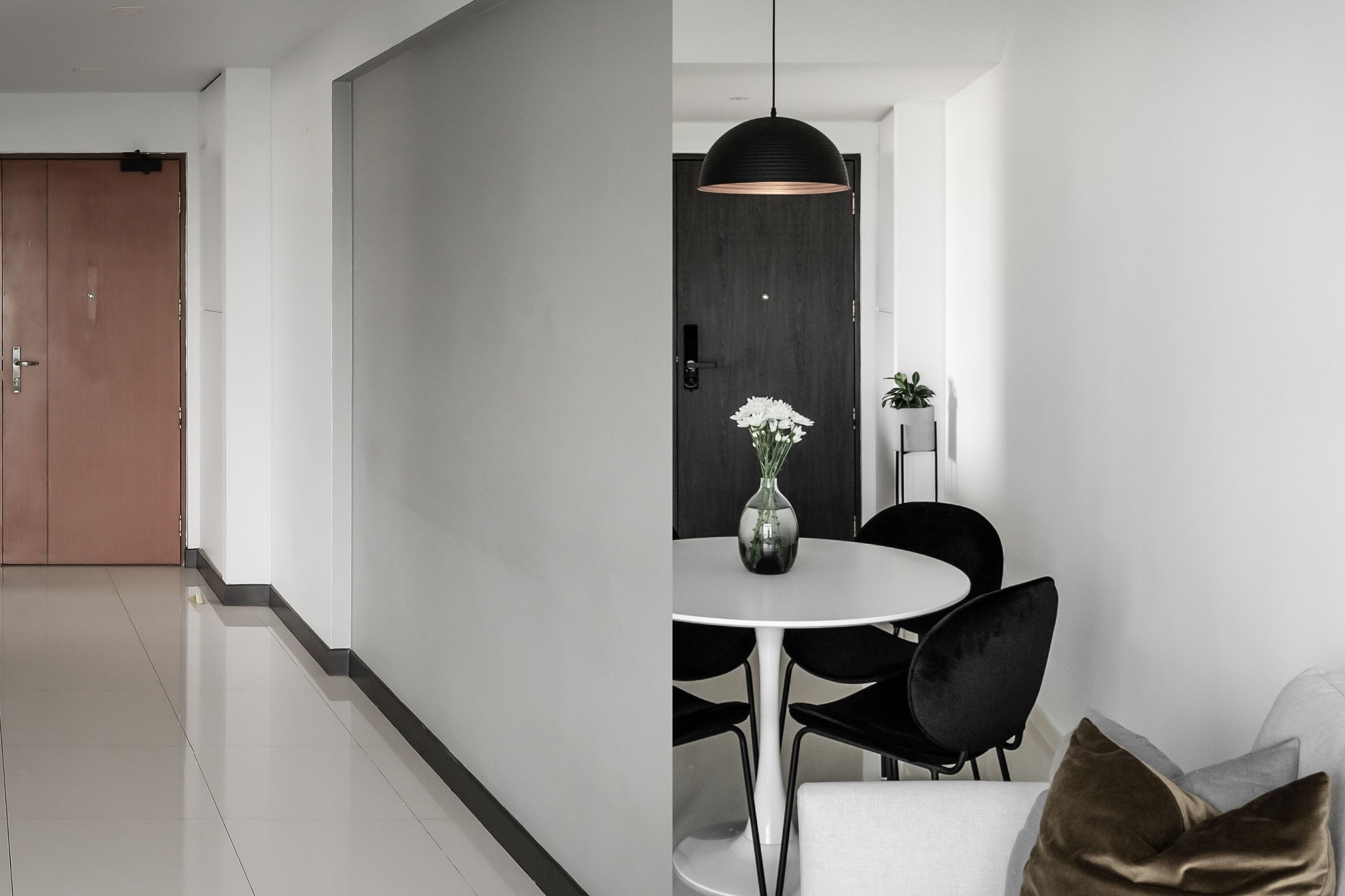
I dislike niches, the parts of walls that dip in, for no reason obvious to me. (I’ve since been told it’s to save material on walls that aren’t structural and can be hacked.) I’ve seen homes which make them a feature by painting them a different colour or installing carpentry. But as I’m in pursuit of a blank canvas, I had the niches covered up with dry wall. The point is to extend a surface from corner to corner, reducing the number of lines on it.
More from Stacked
Why Are Homebuyers Choosing Pricier New Launch 2-Bedders Over Resale Options In 2025?
In the current property market, we’re seeing a change of attitude toward two-bedders. These were once seen as little more…

The same principle applies everywhere else. False ceilings are great because they hide wiring for your ceiling fixtures and create a flat surface overhead. But I often see cutouts for air-conditioning units because the ceiling isn’t high enough. I decided to terminate my false ceilings wherever my air-conditioning units were, just to avoid those cut-outs.
Pipes and trunking are another culprit adding extraneous architectural lines. Conceal pipes where possible, and if you must have trunking, have them boxed up. Out of sight, out of mind.
Reducing architectural lines may be a step too far for you, but remember, we’re trying to minimise visual stimulation here. As far as I’m concerned, the fewer lines, the better.
3. Keep lighting soft and warm
If you’ve followed the first two strategies, you’re already in good stead to create an introvert’s home. But if you don’t pay attention to lighting, you can really wreck all the good work you’ve done for your sanctuary-to-be.
The operative word here is: diffused. As far as possible, try to avoid a single harsh central point of light in a room. I tried to have as many lighting points as possible, spread evenly across each ceiling. That way, I could use dimmer bulbs and achieve softer, even illumination in my spaces.
Cove lighting is a popular way to light a space softly, but it’s not my favourite lighting method because it creates a nook for trapping dust and attracts other unmentionables. Not very calming at all.

Where multiple lighting points weren’t possible in my home, I chose light fixtures with more than one bulb. Track lighting is another great option to spread out your light sources.
And lastly, for a home that reads cosy and mellow, I always opt for warm lighting. I dislike harsh, white light for domestic environments – I figure that when we’re at home at night, we should ideally be winding down from the day. So why extend the day with daylight bulbs?
And in the interest of keeping my colour palette consistent throughout my home, every single bulb in my flat is warm white, specifically the colour temperature 3,000K to 3,200K. Yes, even in my service yard, bathrooms and home shelter. I don’t wish to be wincing every time I turn on a light in my home.
Create a blank canvas
I truly believe interior design should resonate with your personality. I’m an introvert, and I used these three strategies to guide my renovation decisions and create my ultimate refuge from a turbulent world. But it’s just a blank canvas. In Part 3, I’ll be sharing three more strategies for furnishing your introverted space.
If you’d like to get in touch for a more in-depth consultation, you can do so here.
Have a home story to share? Email us at stories@stackedhomes.com.
Dan
Dan is a diehard introvert, freelance writer, first-time property owner, and backseat interior designer. He posts pictures of his home and writes about an odd combination of interior design, lifestyle, and self-development on his Instagram channel @stayingonthehill.Read next from Homeowner Stories

Homeowner Stories What I Only Learned After My First Year Of Homeownership In Singapore

Homeowner Stories I Gave My Parents My Condo and Moved Into Their HDB — Here’s Why It Made Sense.

Homeowner Stories “I Thought I Could Wait for a Better New Launch Condo” How One Buyer’s Fear Ended Up Costing Him $358K

Homeowner Stories How We Saved $300K And Got Our 4-Room Toa Payoh Flat in Just 7 Months
Latest Posts

Property Market Commentary Why This Once-Ulu Town In Singapore Is Going To Change (In A Big Way)

Singapore Property News This HDB Just Crossed $1.3M For The First Time — In An Unexpected Area

Singapore Property News “I Never Thought I’d Be Sued by a Tenant.” What Long-Time Landlords in Singapore Miss

Property Market Commentary I Lived In Bayshore When It Was ‘Ulu’. Here’s How Much It Has Changed

Singapore Property News HDB Resale Prices Finally Slowed in 2025 — Will It Continue in 2026?

Singapore Property News Breaking News: District 23 Condo Sells Out In Under Two Years At $2,120 Psf Average

On The Market Here Are The Cheapest 3-Bedroom Condos in Central Singapore You Can Still Buy From $1.15M

Property Market Commentary Why The Singapore Property Market Will Be Different In 2026 — And It’s Not Just About Prices

Editor's Pick 2025 Year-End Review Of The Singapore Property Market: What The Numbers Reveal

Pro This 21-Year-Old Condo Didn’t Sell Out Initially, Yet Became A Top Performer

Editor's Pick How The HDB Resale Market Performed In 2025, And What It Means For 2026 Prices

Editor's Pick 4 Key Trends Reshaping Singapore’s New Launch Condo Market In 2026

Singapore Property News Why More Land Doesn’t Automatically Fix Housing In Singapore

On The Market Here Are The Cheapest 4-Room HDB Flats in Central Singapore You Can Still Buy From $490K

Editor's Pick Should We Buy An Old 99-Year Leasehold Condo To Live In: Will It’s Value Fall When The Lease Runs Out?



